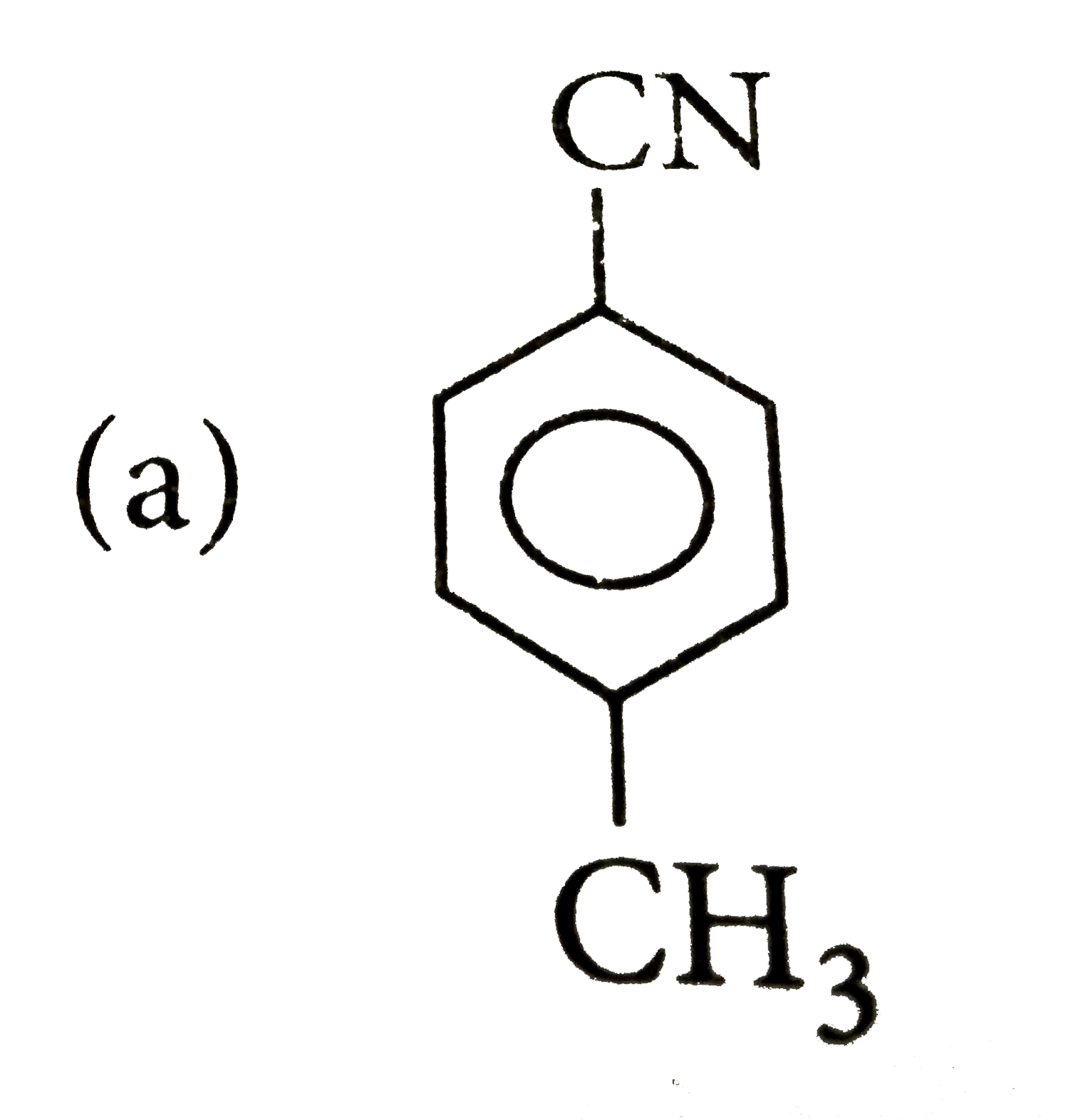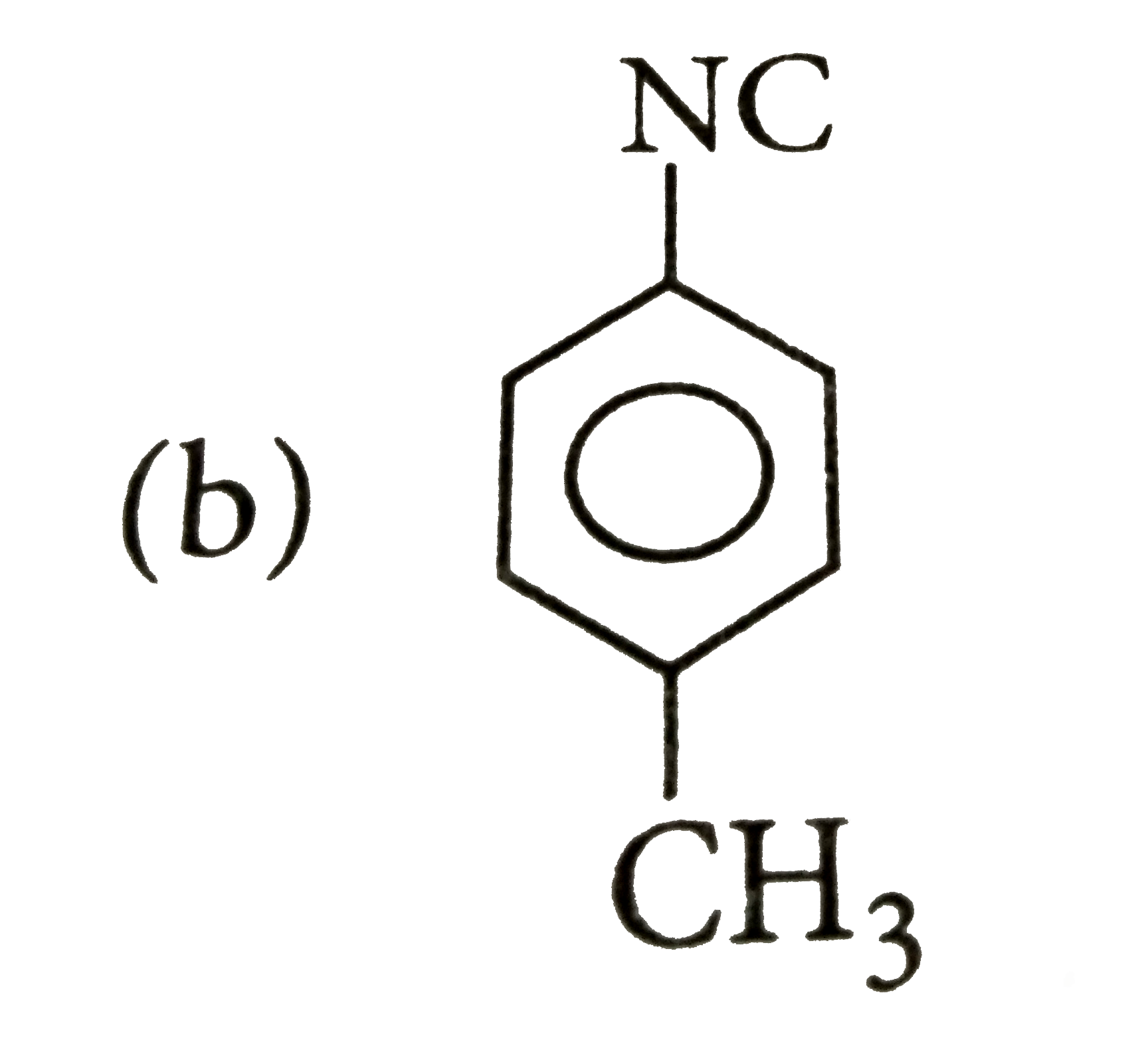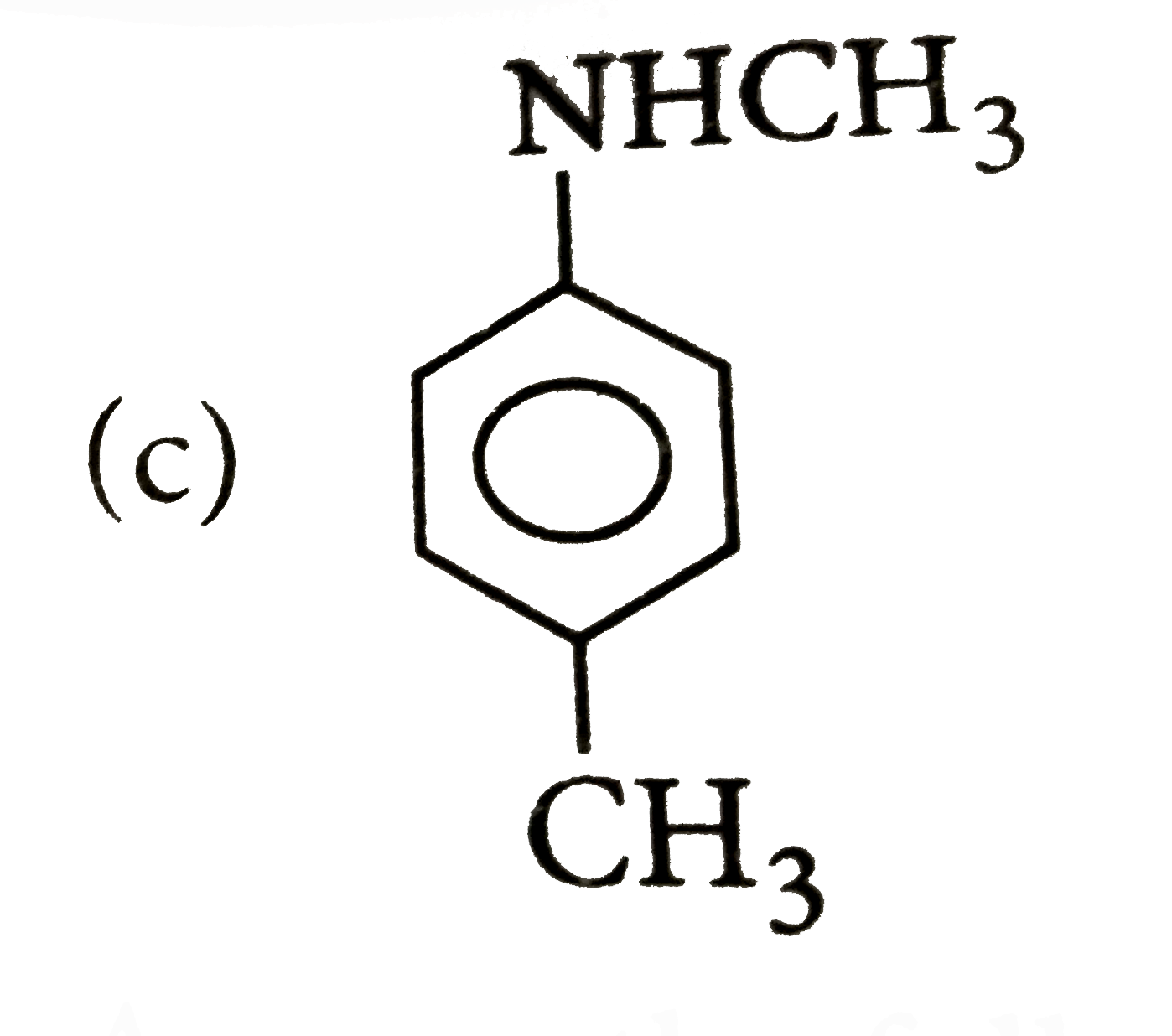When p-toluidine reacts with chloroform and alcoholic KOH, then the product is




To solve the question regarding the reaction of p-toluidine with chloroform and alcoholic KOH, we will follow these steps:
Step 1: Identify the Reactants
We start with p-toluidine, which is an aromatic amine. Its structure can be represented as follows:
- p-toluidine (4-methyl aniline) has the formula C6H4(NH2)(CH3) where the NH2 group is at the para position to the methyl group.
Step 2: Understand the Reaction Conditions
The reaction involves chloroform (CHCl3) and alcoholic KOH. This combination is known to facilitate the formation of isocyanides from primary amines.
Step 3: Reaction Mechanism
When p-toluidine reacts with chloroform and alcoholic KOH, the mechanism involves:
1. The amine (NH2 group) attacks the carbon of chloroform, leading to the formation of an intermediate.
2. The intermediate undergoes dehydrochlorination and rearrangement to form isocyanide.
Step 4: Product Formation
The final product of this reaction is an isocyanide (also known as carbylamine). The structure of the isocyanide derived from p-toluidine will have the following features:
- An isocyanide functional group (-N≡C) attached to the aromatic ring, with the methyl group still present.
Conclusion
Thus, the product formed when p-toluidine reacts with chloroform and alcoholic KOH is p-tolyl isocyanide.
Final Answer
The product is isocyanide.
---
We start with p-toluidine, which is an aromatic amine. Its structure can be represented as follows:
- p-toluidine (4-methyl aniline) has the formula C6H4(NH2)(CH3) where the NH2 group is at the para position to the methyl group.
The reaction involves chloroform (CHCl3) and alcoholic KOH. This combination is known to facilitate the formation of isocyanides from primary amines.
When p-toluidine reacts with chloroform and alcoholic KOH, the mechanism involves:
1. The amine (NH2 group) attacks the carbon of chloroform, leading to the formation of an intermediate.
2. The intermediate undergoes dehydrochlorination and rearrangement to form isocyanide.
The final product of this reaction is an isocyanide (also known as carbylamine). The structure of the isocyanide derived from p-toluidine will have the following features:
- An isocyanide functional group (-N≡C) attached to the aromatic ring, with the methyl group still present.
Thus, the product formed when p-toluidine reacts with chloroform and alcoholic KOH is p-tolyl isocyanide.
The product is isocyanide.
Topper's Solved these Questions
- AMINES BOOK - NCERT FINGERTPS ENGLISHCHAPTER - AMINES EXERCISE - Classification
2 Videos
- AMINES BOOK - NCERT FINGERTPS ENGLISHCHAPTER - AMINES EXERCISE - Preparation Of Amines
5 Videos
- ALDEHYDES, KETONES AND CARBOXYLIC ACIDSBOOK - NCERT FINGERTPS ENGLISHCHAPTER - ALDEHYDES, KETONES AND CARBOXYLIC ACIDSEXERCISE - Assertion And Reason
15 Videos
- BIOMOLECULESBOOK - NCERT FINGERTPS ENGLISHCHAPTER - BIOMOLECULESEXERCISE - Assertion And Reason
15 Videos
Similar Questions
Knowledge Check
When primary amine reacts with chloroform in ethanolic KOH then product is
Aan isocyanideBan aldehydeCa cyanideDan alcoholWhen ethyl amine is heated with chloroform and alcoholic KOH, a compound with offensive smell is obtained. This compound is :
AA secondary amineBAn isocyanideCA cyanideDAn acidThe reaction of chloroform with alcoholic KOH and p-toluidine form-
A B
B C
C D
D
The reaction of chloroform with alcoholic KOH and p-toluidine form-
View SolutionWhen Ethylchloride and alcoholic KOH are heated, the compound obtained is
View SolutionChloroform when treated aniline and alcoholic KOH, the product formed is?
View SolutionWhat is the major product obtained when 2-bromobutane is heated with alcoholic KOH? Write only the major product expected to be obtained.
View SolutionThe product formed when aniline is warmed with chloroform and caustic potash is :
View Solution
